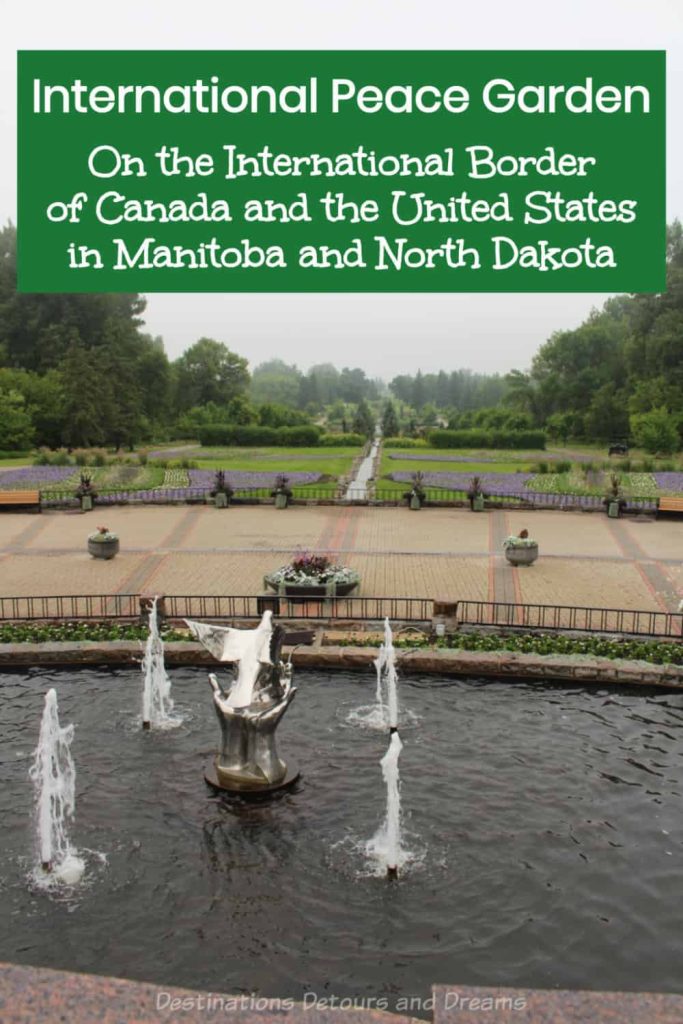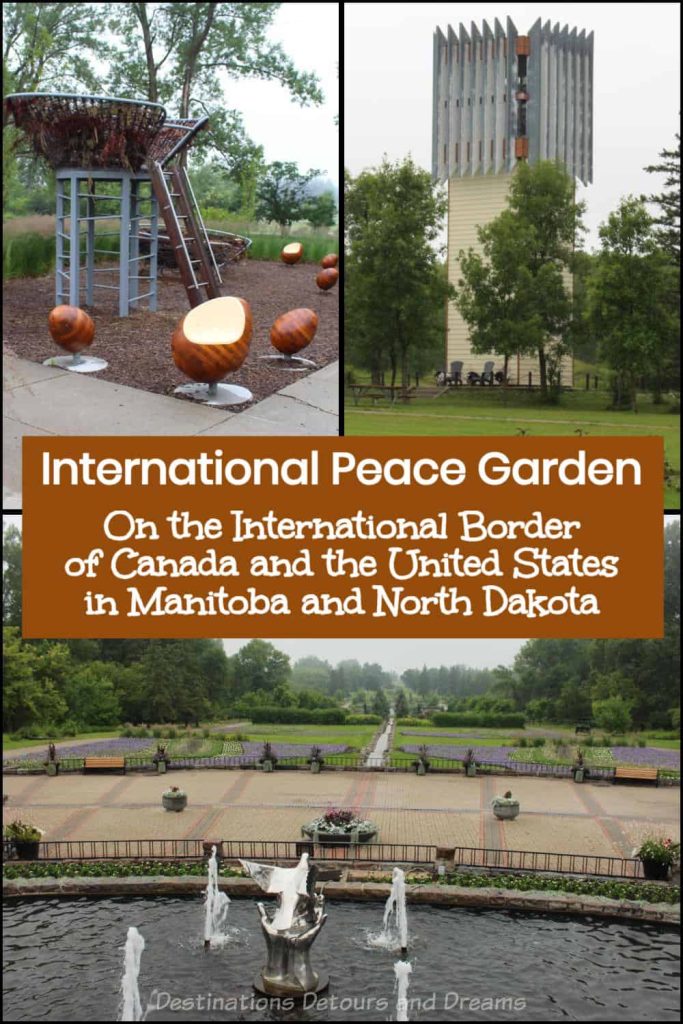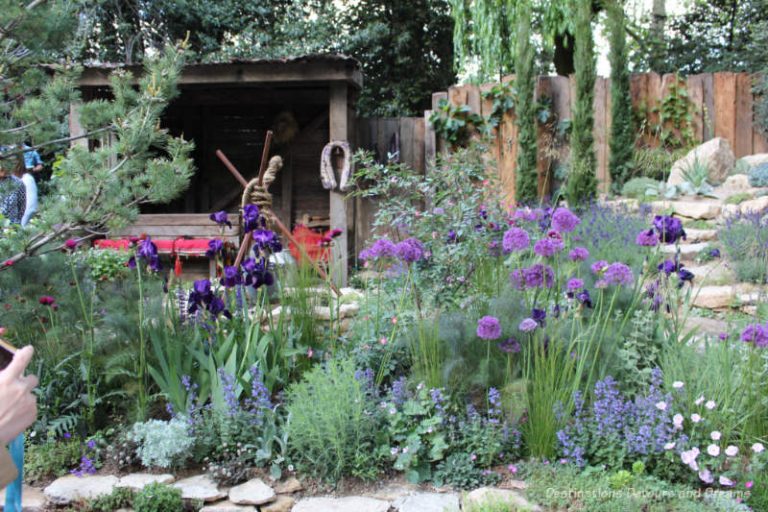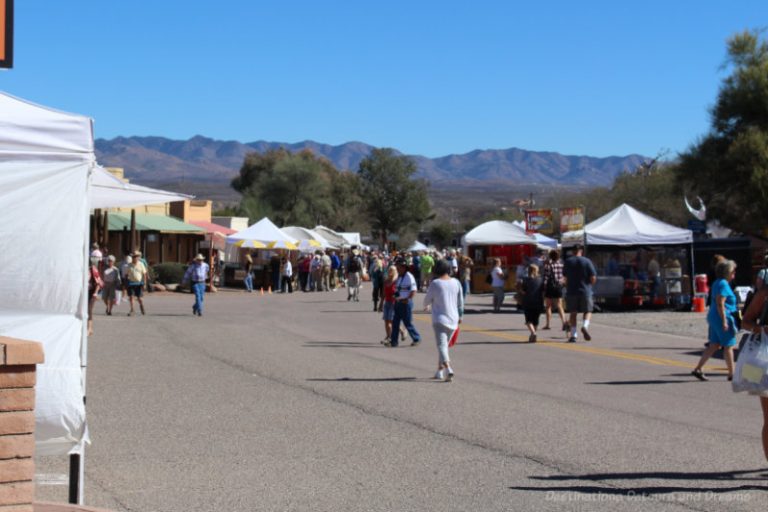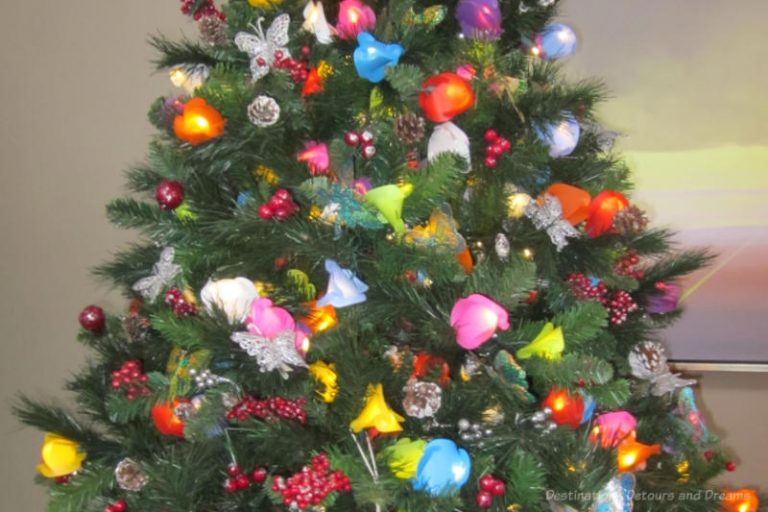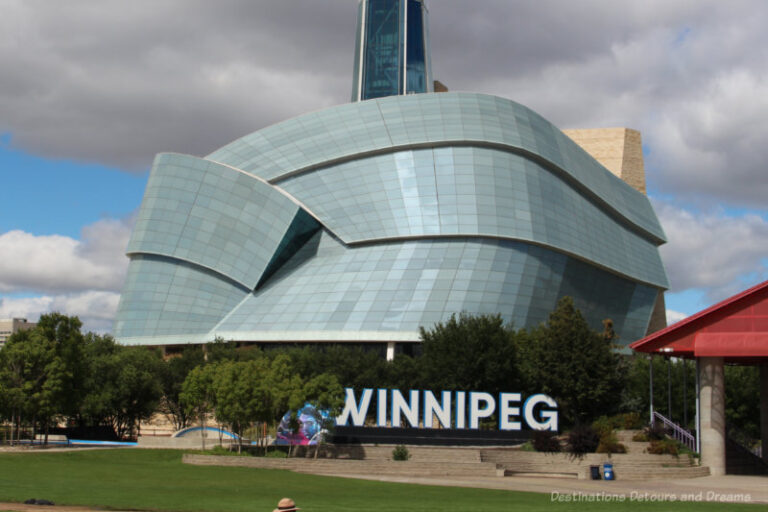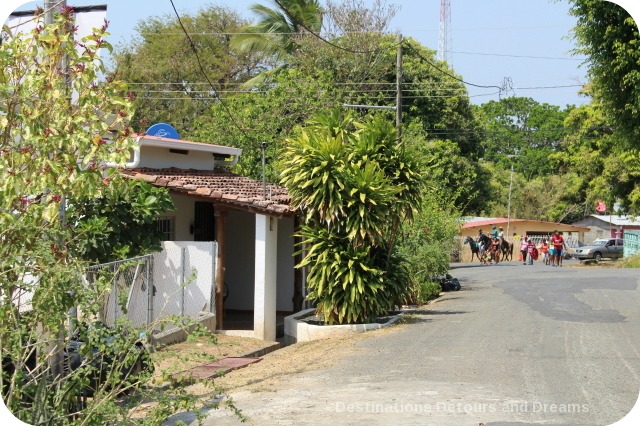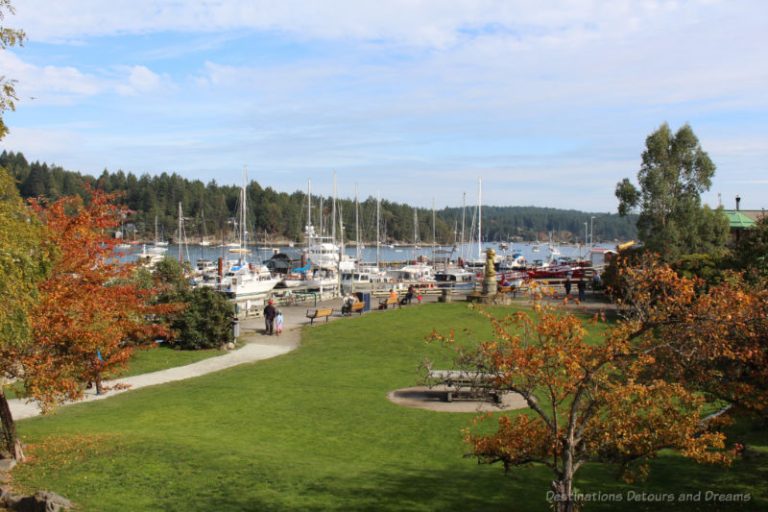International Peace Garden
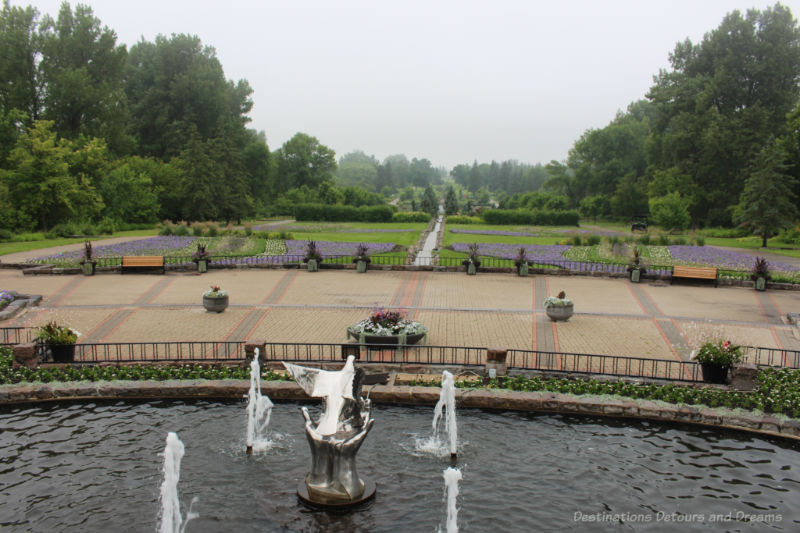
A park and garden straddling the border between the United States and Canada celebrates friendship and peace
Straddling the border between the United States and Canada near the geographical centre of North America, the International Peace Garden was founded on the premise of peace, cooperation, and friendship. It celebrates the peaceful relationship between the two countries and has a mission to foster peace and friendship. The year-round destination contains outdoor gardens, hiking and cross-country skiing trails, picnic sites, scenic drives, monuments, a campground, canoeing and kayaking spots, and more.
Dr. Henry J. Moore of Islington, Ontario conceived the idea of the garden in 1928. A year later he proposed the idea at a meeting of the National Association of Gardeners who approved the plan. On July 14, 1932, there was a ground breaking and dedication ceremony. Two flagpoles flew the Stars and Stripes and the Union Jack, the United Kingdom flag commonly used in Canada before the Maple Leaf flag was adopted in 1965. Manitoba donated 1451 acres and North Dakota purchased and donated 888 acres to the garden along the international boundary line.
Over the years, installations and buildings have been added to the garden. The Historic Lodge is the oldest building in the park, having been constructed in 1937. One of the most iconic and popular attractions is the Floral Clock, which is 18 feet in diameter and displays a unique floral design each year using anywhere from 2,000 to 5,000 plants. The original clock, which was received from the Bulova Clock Company in 1966 and was a duplicate of the famous Bulova Floral Clock at Berne, was replaced with a new clock from St. Louis, Missouri in 2005. (Unfortunately, I didn’t manage to get a photo of the clock on my visit.)
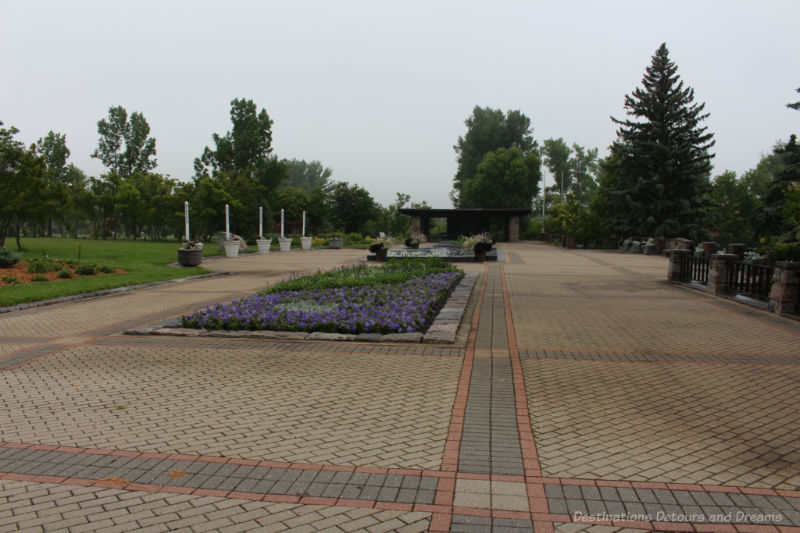
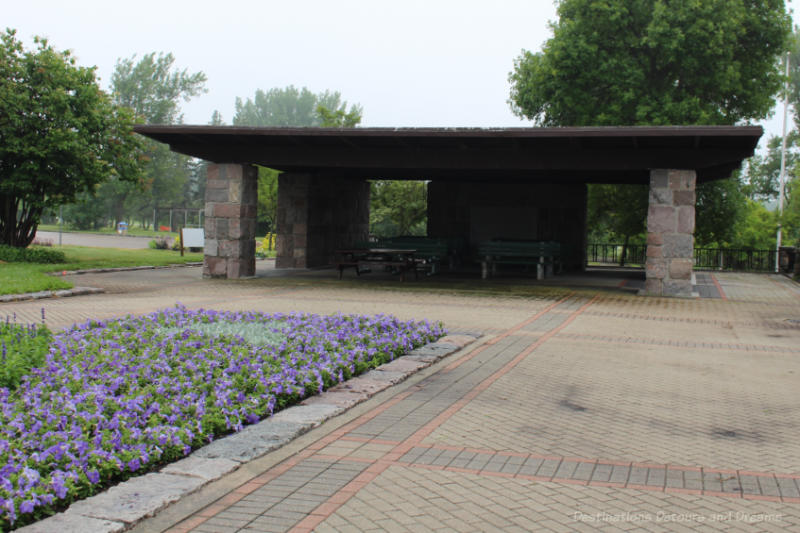
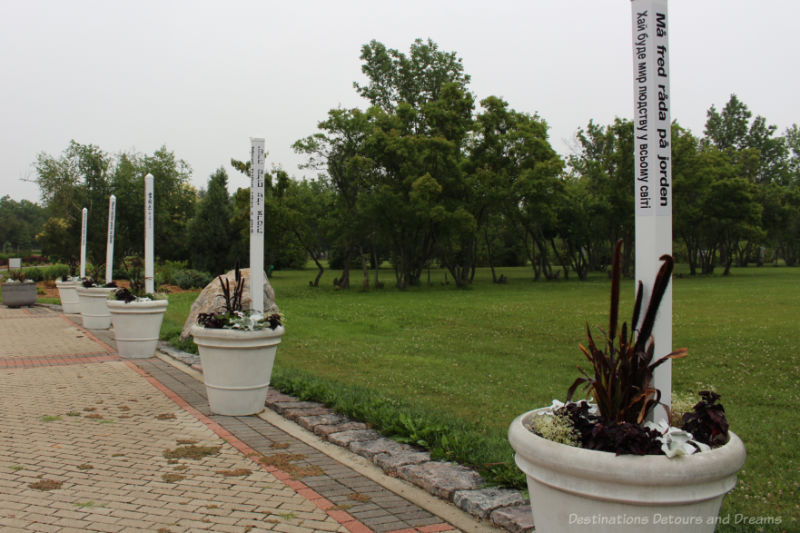
Although I’d visited the garden a few times as a child and young adult, it had been decades since I’d been there before visiting in the summer of 2025, at a time when the friendship between our two countries is threatened.
The rain on the day of my visit shortened the time I might otherwise have spent exploring the many things in the garden, but it certainly did not diminish the beauty of the botanical gardens at the heart of the space.
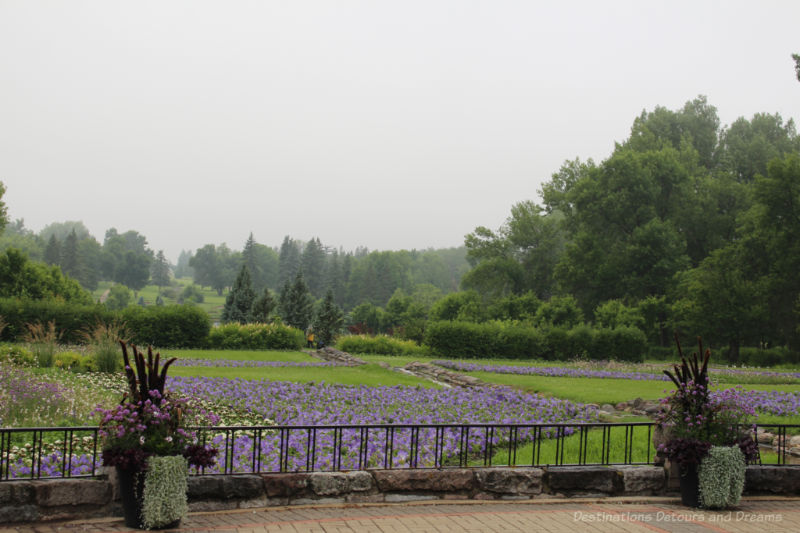
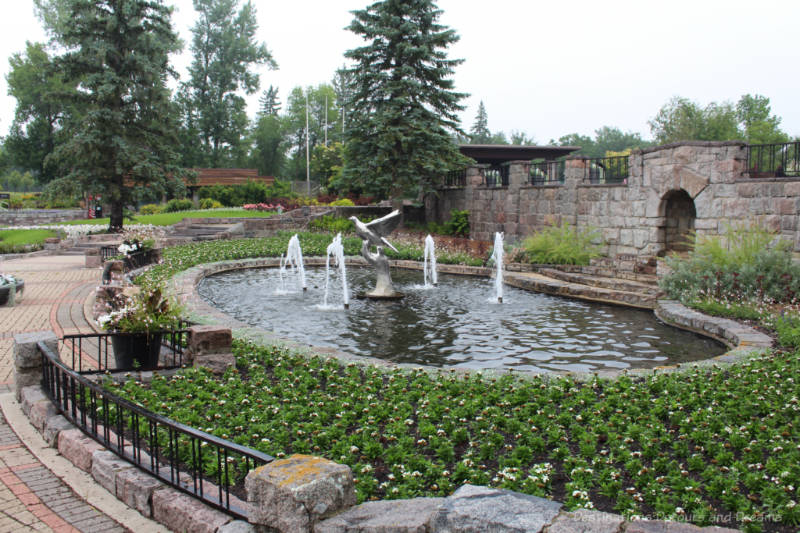
You’ll find the botanical gardens and many attractions in the middle of a centre loop drive with a few parking areas along the way. This centre area straddles the Canada-U.S. border.
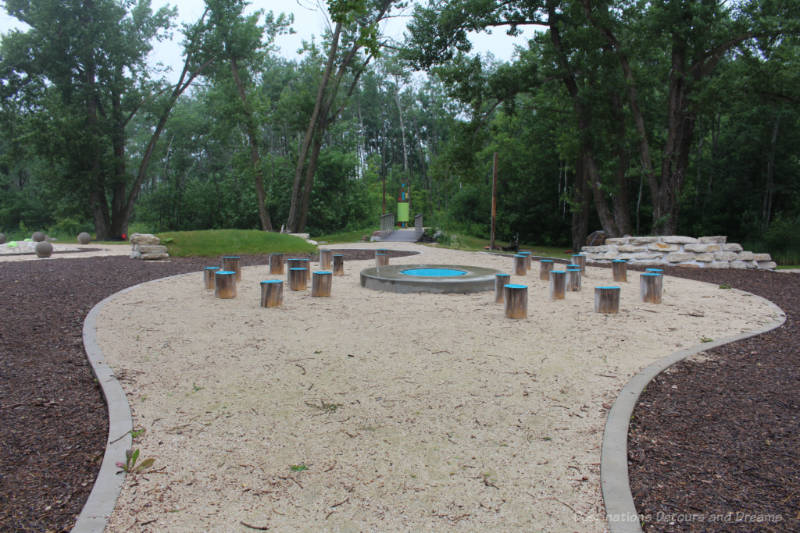
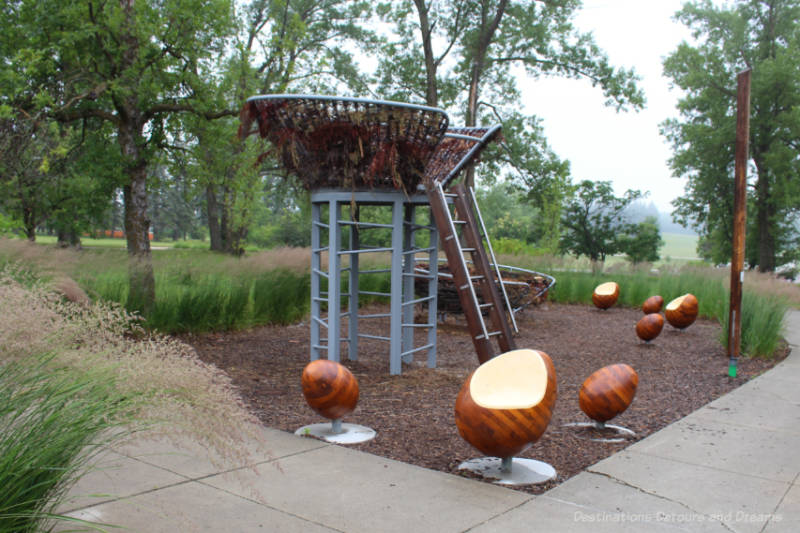
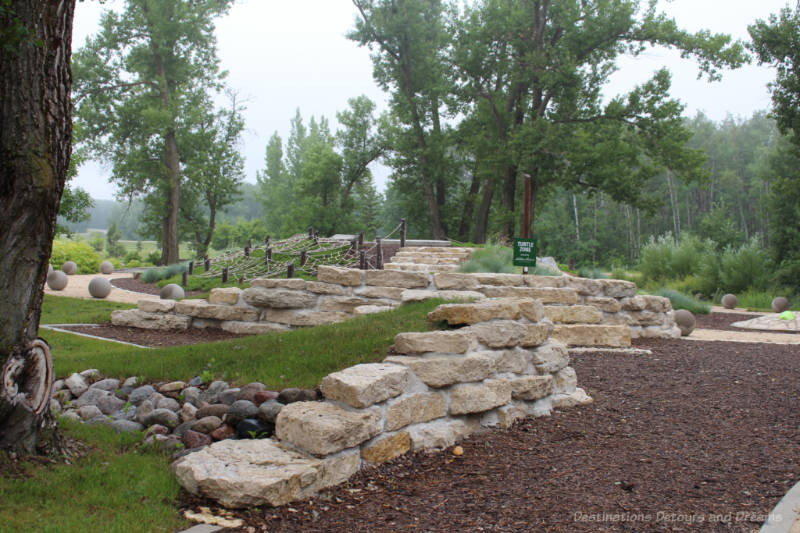
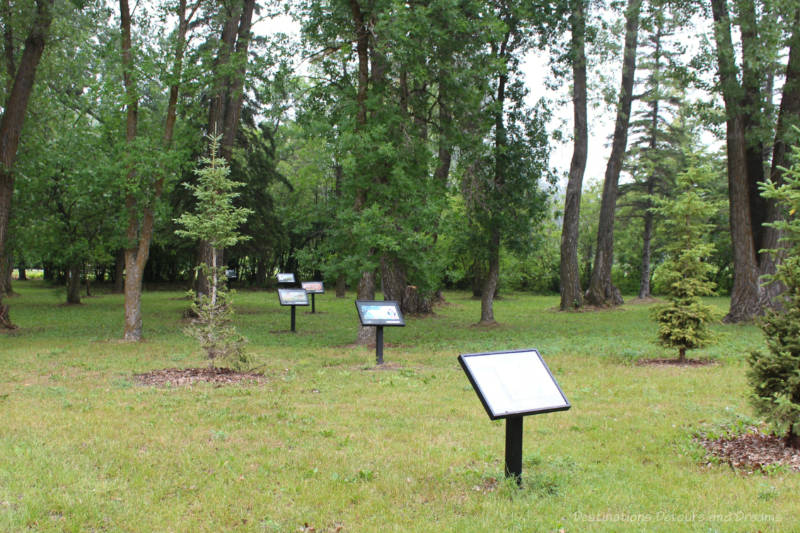
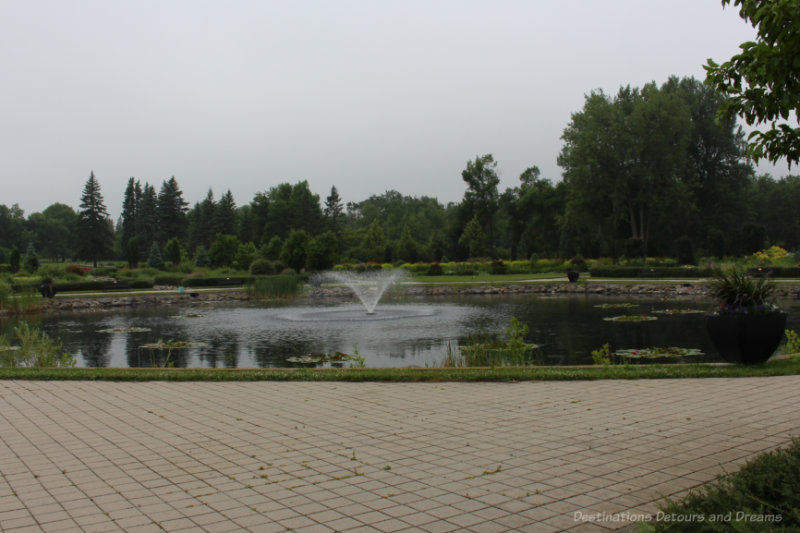
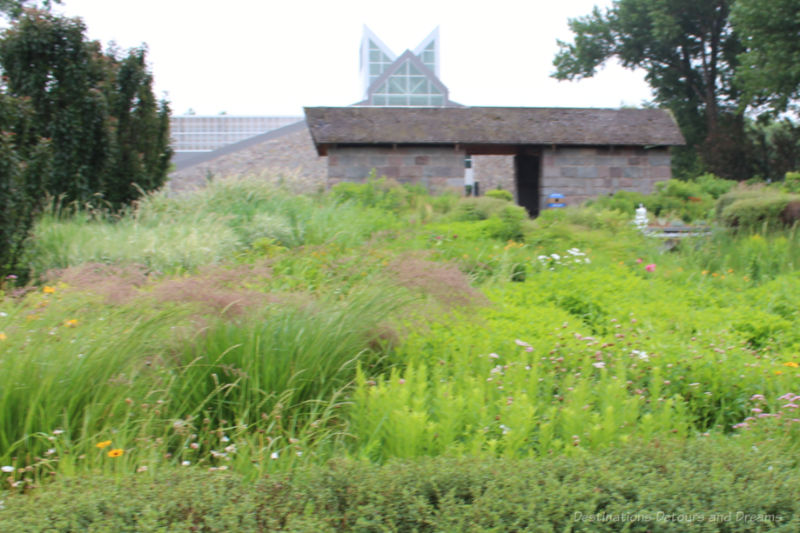
The Conservatory and Interpretative Center, opposite the Sunken Garden, houses a restaurant, gift shop, horticulture library and The Conservatory.
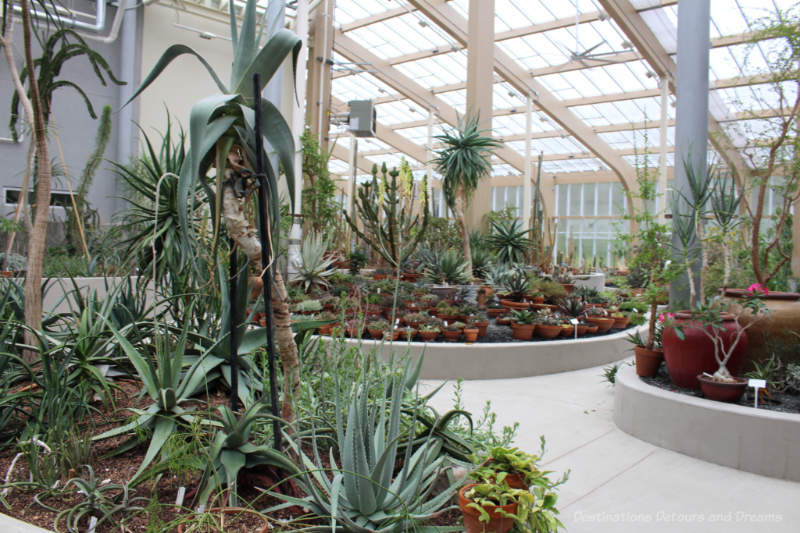
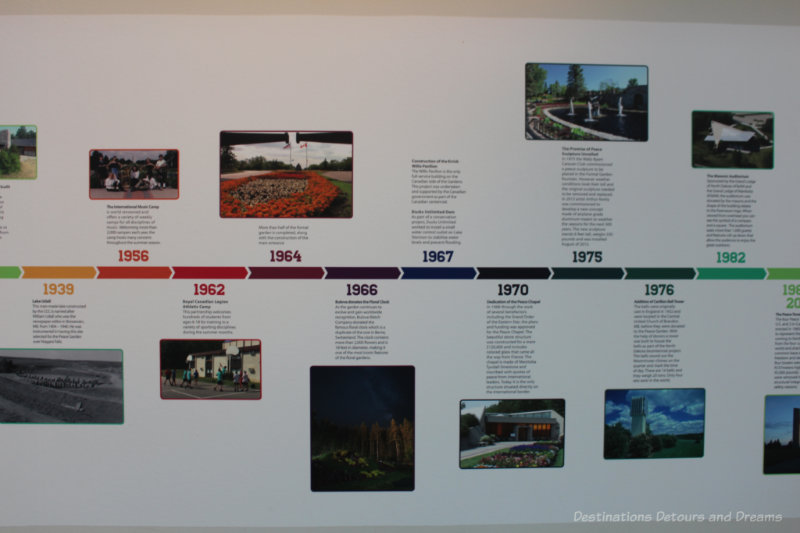
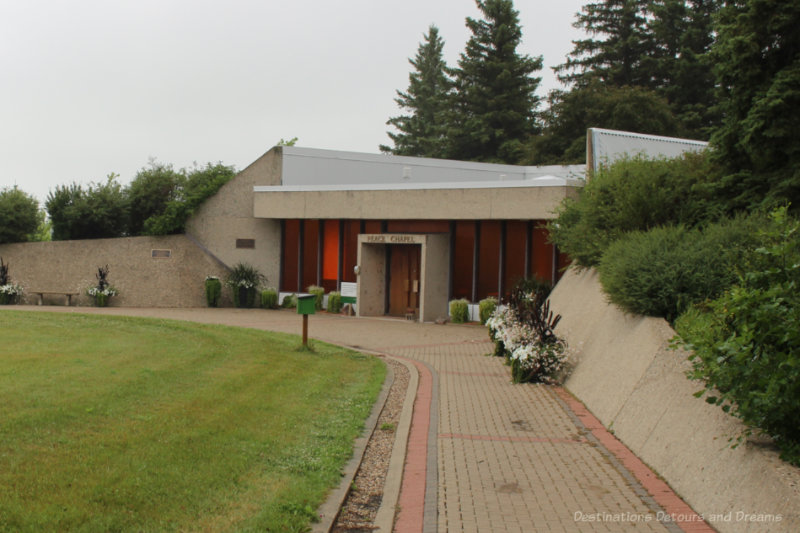
The Peace Chapel, built in 1968, is constructed from Manitoba limestone, inscribed with quotes of peace from international leaders, and includes imported French coloured glass panels.
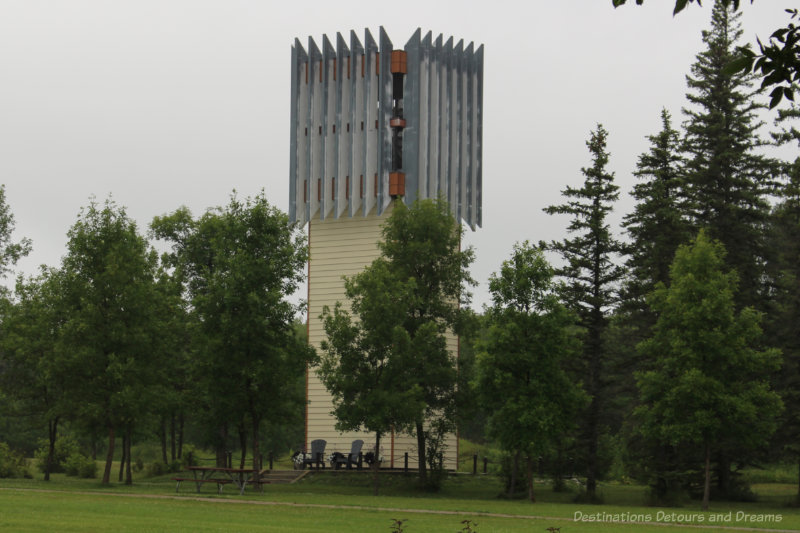
The Carillon Bell Tower was a 1976 Bicentennial project of the North Dakota Veteran’s Organization. The bells were originally cast in England in 1932 and were located in the Central United Church of Brandon, Manitoba before they were donated to the Peace Garden. The bells sound out the Westminster chimes on the quarter hour and mark the time of day. Only four such sets exist in the world.
Other attractions in the entrance and centre area of the park include the Grand Opening Marker Cairn, a 9/11 memorial with steel girders from New York City’s former Twin Towers, and a monument erected in 2003 to commemorate the U.S. and Canadian Commissioners who have served the International Boundary Commission.
Loop roads branch out on both sides of the centre loop. One takes you through the Canadian side of the park, the other through the U.S. side. For the most part, the roads are one-way. When I asked for information about the routes at the gift shop, the woman working there told me the loop through the Canadian side is approximately three miles long and the loop through the U.S. side is approximately three-and-a-half miles long.
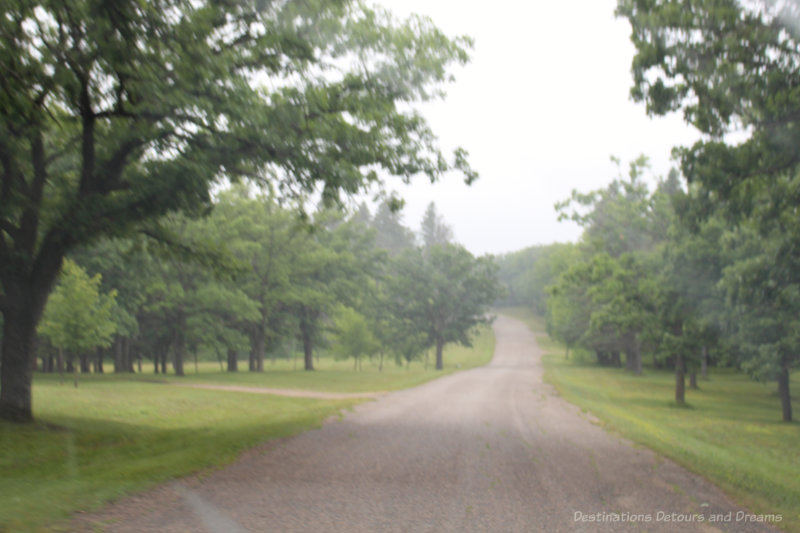
You’ll find hiking trails and picnic spots on both sides. Man-made Lake Stormon, named after Judge John Stormon of Rolla, North Dakota, stretches through a good portion of the Canadian side, where you’ll also find a few smaller lakes. Man-made Lake Udall, named after W.N. Udall of Boissevain, Manitoba is on the U.S. side. On the U.S. side, you’ll also find the North American Game Warden Museum, a joint effort between the two country’s wildlife law enforcement offices to highlight the work of wildlife conservation officers, as well as the Historic Lodge.
The International Peace Garden is known for the International Music Camp, which offers weekly sessions for students and adults in music, theatre, dancing, writing, and the visual arts in June and July. The camps stage performances throughout those weeks.
There is a campsite in the park and cabins that can be rented in fall and winter.
The Peace Garden operates on a combination of public and private funding. Public funding is provided by both the state of North Dakota and the Manitoba provincial government. Both the Canadian and United States federal governments have provided funds throughout history, but not on a yearly basis. In addition to a full-time administration and horticulture staff, the Peace Garden is governed by a volunteer board of directors.
Dr. Moore originally imagined an international garden dedicated to peace as a living tribute to the friendship between the United States and Canada. The garden has done that for over 90 years and continues to do so in spite of the current rocky state of Canada-U.S. relations with an ongoing trade war and threats to Canadian sovereignty. Hopefully, a better relationship can be restored and the Garden will celebrate friendship and peace between the two countries for many more decades.
A few weeks after my visit, the International Peace Gardens held a Handshake Across the Border event as part of their Summer Floral Celebration Day. Hundreds of Canadians and Americans lined up and shook hands across the border in a show of prevailing friendship. You can read more in this CBC news article. It appears to have been raining that day too.
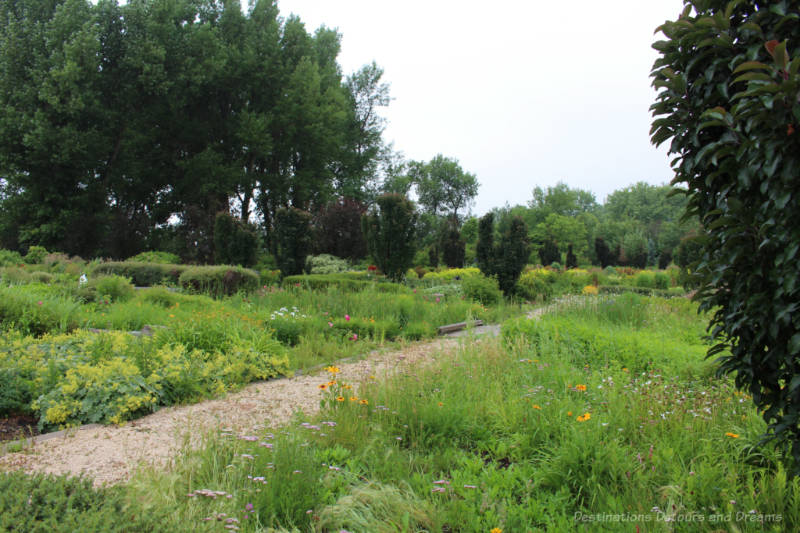
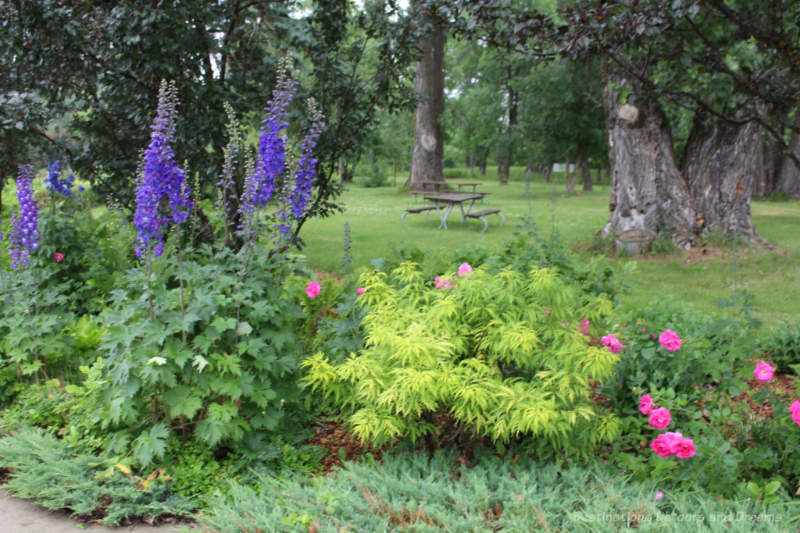
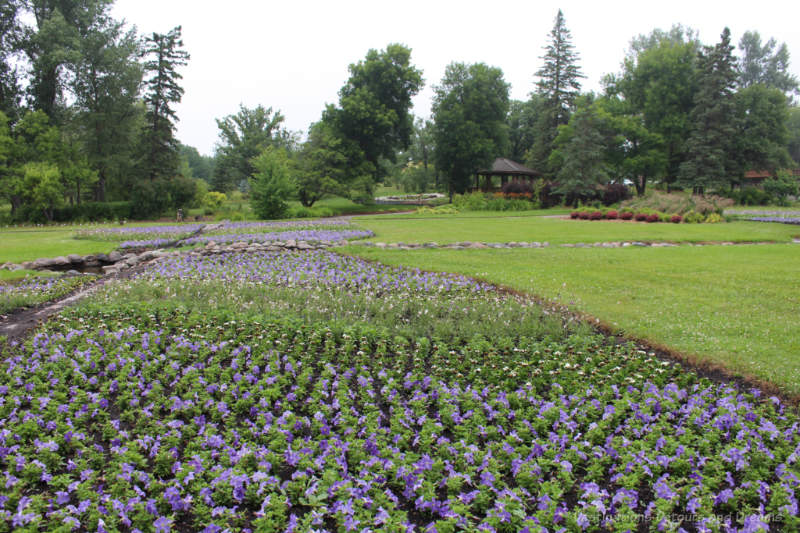
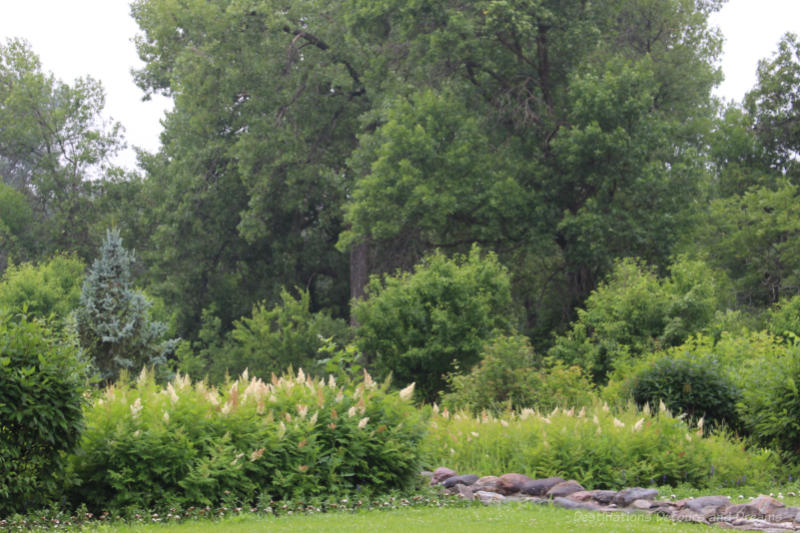
The International Peace Garden is located approximately 20 miles north of Dunseith, North Dakota on the United States side, and approximately 28 kilometers south of Boissevain, Manitoba, Canada. Entrance is located in the customs area between the two countries. You depart through customs and will need appropriate identification at that time. A passport is recommended. The International Peace Garden website states that a government-issued ID, such as a driver’s licence along with a copy of a birth certificate, would also be acceptable. I assume this applies only to U.S. or Canadian citizens returning to their country and that the birth certificate shows that country as place of birth. I would advise anyone planning to use something other than a passport to confirm with customs that their documentation will suffice before visiting. My friend and I entered from the Canadian side and used our Canadian passports to go through Canadian customs after exiting the park.
Never miss a story. Sign up for Destinations Detours and Dreams free monthly e-newsletter and receive behind-the-scenes information and sneak peeks ahead.
PIN IT
